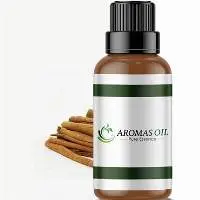
Cassia Oil finds its use for myriads of purposes and is extracted by means of the steam distillation process. Using natural plants and its parts, Cassia oils are obtained by steam distillation process and find its use in curing varying health issues.
Cassia belongs to Lauracea family of the Plant kingdom that grows up to 10 â?? 15m in height. It has leaves that are thick & greyish blue to bluish green in color. The plant has small flowers that have single seed in it.
Cassia Oil is obtained via the steam distillation process from barks, leaves, twigs and stalks. The oil is obtained in yellowish brown in color. It possesses many health, skin, hair and beauty benefits.
Cassia Bark Essential Oil: Brief Introduction If you are in search of aromatic body oils or skincare substances for massages or product formulations, Aromas Oils has the solution with its essential spice oils, including cassia. This spice plant, grown in South Asia, provides oils that can be safely blended for massages or used as ingredients in skincare products. Aromas Oils stands out as one of the major cassia oil suppliers, serving customers in the USA, UK, and various other countries. Cassia Oil serves myriad purposes and is extracted through the steam distillation process. Derived from natural plants and their parts, cassia bark essential oils obtained through steam distillation find application in addressing various health issues. Botany Belonging to the Lauracea family of the Plant kingdom, cassia grows up to 10 15m in height. Its leaves are thick, ranging from greyish blue to bluish green. The plant features small flowers that produce single seeds. Cassia Bark Essential Oil: Introduction Extracted via steam distillation from barks, leaves, twigs, and stalks, Cassia Oil presents a yellowish-brown color. It boasts numerous health, skin, hair, and beauty benefits. Cassia Bark Essential Oil Uses Thought to originate in South China, it has been used for over 4000 years for medicinal and culinary purposes. Believed to boost energy, vitality, life force, and blood circulation. Cultivated in various countries, including India, Malaysia, Thailand, Indonesia, Taiwan, and Vietnam. Utilized in traditional Chinese medicine. In the United States, Cassia Oil is employed for culinary purposes. Cassia Bark Essential Oil Benefits Possesses therapeutic benefits such as antimicrobial, antidepressant, antiviral, anti-arthritic, anti-emetic, and anti-rheumatic properties. Addresses issues like diarrhea, sexual disorders, and digestive disorders. Cassia Bark Essential Oil Blends Well With Cassia Bark Essential Oil complements Clove Bud, Frankincense, Nutmeg, Sweet Orange, Ylang-ylang, Cedarwood, Bergamot, and Rosemary. Documents Available on Request As Cassia Bark Essential Oil wholesale manufacturers, we provide the following documents on request: Certificate of Analysis (CoA) Outlining product specifications, including color, odor, and other details. Gas Chromatography (GC) A sample workflow-cum-pictorial representation of ingredients and their percentages. Mass Spectrometry (MS) Details about the constituents of the product and their proportion in products. General Precautionary Measures Do not use this oil internally. Avoid usage if you are sensitive to Cassia. Not recommended for children unless suggested by a doctor. Volume 100 ml, 250 ml, 500 ml, 1 Ltr, 5 Ltr, 10 Ltr, 25 Ltr
Van Aroma is the leading producer of Korintje Cassia Bark Oil - CO2. We produce and export Korintje Cassia Bark Oil - CO2 from sustainable, and fully traceable sources. Minyak Kulit Kayu Manis Kerinci - CO2 / Extracto de CO2 de corteza de Cassia Korintje / Extrait CO2 d'Ecorce de Cassia Korintje Olfactive Profile: Warm, Woody, Sweet, spicy, cinnamic, and gourmand notes CAS No: 84961-46-6 EC No: 284-635-0 FEMA No: 2257 INCI Name: Cinnamomum Cassia Oil Product Synonyms: minyak kayu manis, cinnamaldehyde, cinnamic aldehyde, bark, Cinnamon, cassia, burmanii
Cinnamomum zeylanicum originates from Sri Lanka. It is a tropical evergreen tree of the laurel family growing up to 15 m (45 feet) in the wild. The tree has a very thin smooth bark, with a light yellowish brown color and a highly fragrant odor. Its pleasant scent has lead it to be a perfect addition to creams, lotions and soaps.
Chamomile oil has excellent calming properties, chamomile is very effective for irritation, impatience and feeling disagreeable, and has great value in treating menstrual and menopausal problems, chamomile is also effective on the skin, not only to sooth and calm, but to heal and for tissue regeneration. Chamomile essential oil has a sweet, straw-like fragrance, is dark blue in color and its viscosity is medium. Chamomile oil is mostly cultivated in hungary, egypt, eastern europe and france, while roman chamomile is cultivated in germany, france, spain, italy, morocco and france.
Geranium essential oil is antibacterial, antispasmodic, anti-tumorial, adrenal support, anti-inflammatory, astringent, antibacterial, anti-fungal, haemostatic (stops bleeding), and general tonic, geranium was used by the ancestors as a remedy for wounds, tumours, and skin care. With antiseptic and anti-inflammatory, geranium essential oil is indicated in acne, dermatitis, eczema, wounds that are weeping and will not heal, bruises, grazes and cuts, light burns, haemorrhoids, varicose veins, and ulcers, sore throats, tonsillitis, and neuralgia.
Juniper oil is used in aromatherapy to help stimulate and strengthen the nerves and bolster the spirits in challenging situations, while helping to relieve urine retention. It is used for treating rheumatism, arthritis and gout, as well as cellulite, acne, dermatitis, blocked pores, psoriasis and weeping eczemas. The main chemical components of juniper oil are a-pinene, camphene, b-pinene, sabinene, myrcene, a-phellandrene, a-terpinene, y-terpinene, 1,4-cineole, b-phellandrene, p-cymene, terpinen-4-ol, bornyl acetate, cayophyllene and trace amounts of limonene, camphor, linalool, linalyl acetate, borneol and nerol.
Lavender oil is an essential oil obtained by distillation from the flower spikes of certain species of lavender. Our lavender essential oil is produced from flowers growing in higher elevations of Bulgaria. The oil has a fresh, soft and sweet aroma. Lavender is indigenous to mountainous regions of the Mediterranean countries and the black sea, gowning best in the poor, well-drained soils. Lavender oil, which has long been used in the production of perfume, can also be used in aromatherapy. It has a calming and regenerating effect over the human body. Lavender oil can be used as an antiseptic and pain reliever to be applied to minor burns and insect bites and stings.






